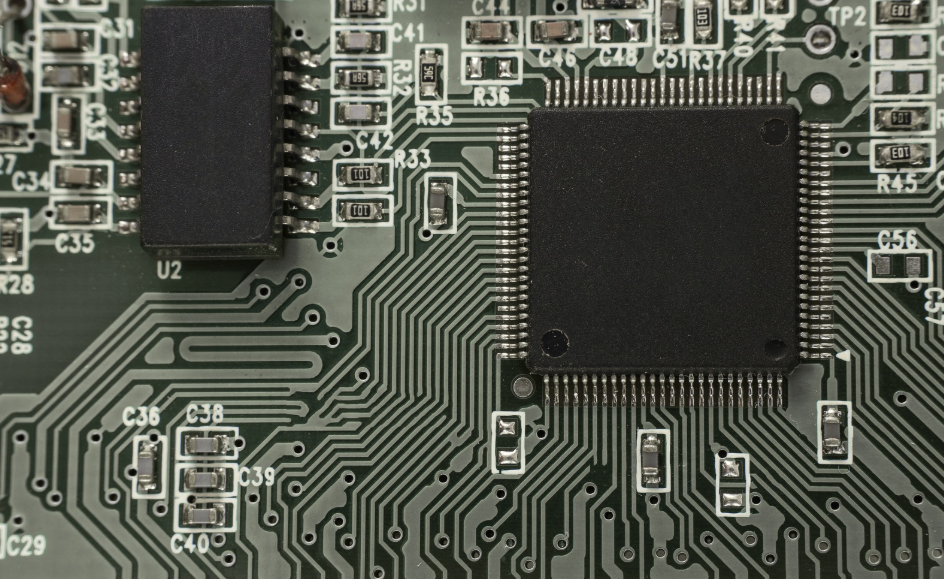How Current Military Conflicts Are Reshaping Semiconductor Lead Times

More from the Category
It’s easy to overlook the ripple effects of war when your job is running diagnostics on a PCB or sourcing 16-bit flash microcontrollers. But if you work with electronics systems today, whether in aerospace, automotive, or defense, you’re already feeling it.
Military conflicts are no longer confined to borders. They're global supply chain disruptors. When a drone strike shuts down a port or tensions flare near the Taiwan Strait, the consequence isn't just political. It’s practical: semiconductor lead times stretch, critical materials vanish from inventory forecasts, and delivery windows become guesswork.
We’ve seen this before during the pandemic, but now the stressors are less predictable and more persistent. From Russia’s invasion of Ukraine to maritime tension in the Red Sea, conflict is tightening the squeeze on a fragmented, geographically vulnerable semiconductor ecosystem.
This matters, especially for national defense. The fighter jets, satellites, and encrypted communication systems that keep nations secure depend on timely access to microelectronics. When chips are late, readiness falters.
In this article, we’ll map how current military conflicts reshape semiconductor availability, examine why lead times remain stubbornly high, and consider what engineers, OEMs, and defense suppliers should expect next.
Want to know more? Check out: How Military Tensions Are Driving the Next Semiconductor Chip Race
Geopolitical Risk & Semiconductor Chokepoints
The semiconductor industry is a masterpiece of global specialization, and a vulnerability map waiting to be triggered. No single region controls the entire supply chain. Instead, it's divided across critical chokepoints that don’t respond well to conflict.
Start with Taiwan. It manufactures over 60% of the world’s semiconductors and over 90% of the most advanced nodes. That concentration isn’t just impressive; it’s dangerous. A blockade, cyberattack, or kinetic conflict in the Taiwan Strait could upend the entire global chip supply overnight.
Then there’s Ukraine. Before the war, it supplied more than half of the world’s purified neon, a gas essential for the lasers used in photolithography. The invasion didn’t just disrupt this supply, it made it clear how fragile the upstream raw materials pipeline really is.
Meanwhile, Russia produces about 40% of the world’s palladium, another key element in chip manufacturing. Sanctions, export bans, and logistics breakdowns in the Black Sea have complicated access to these materials, extending procurement cycles.
On the policy front, semiconductor access has become a lever of power. The United States’ export controls on advanced chips to China - enacted in 2022 and updated multiple times, have reshaped trade flows. China’s own countermeasures, including restrictions on gallium and germanium, hint at just how strategic materials have become.
National defense doesn’t operate in a vacuum. It depends on this fragmented supply web to keep systems running and development on track. In the current geopolitical climate, that web is under constant stress.
Conflict-Specific Disruptions
Each active conflict zone today presents its own set of risks to semiconductor production and delivery timelines. The impact isn’t theoretical. Lead times are rising, and fabs are adjusting their procurement and risk models in real time.
Ukraine–Russia War
Before the war, Ukraine supplied over 50% of the world’s high-purity neon gas. That gas is vital for deep ultraviolet lithography, a cornerstone of chip manufacturing. When Russian forces moved into Mariupol, home to a major neon purification facility—supply dried up nearly overnight.
Neon prices spiked by over 600% in 2022. Even now, replacement sources haven’t stabilized. China has ramped up output, but volumes and purity remain inconsistent.
Beyond neon, Russia’s palladium exports have come under pressure due to sanctions. This matters for multilayer ceramic capacitors, memory modules, and other components with precious-metal dependencies.
Logistics have also suffered. Container traffic through the Black Sea has dropped sharply, delaying deliveries of raw materials and finished semiconductors alike. The downstream effect: longer cycle times and unpredictable shipment schedules.
Taiwan Strait Tensions
Taiwan remains the heartbeat of global chip fabrication. TSMC alone produces the most advanced nodes used in everything from iPhones to missile guidance systems.
Even without a direct conflict, rising military activity in the region has raised insurance costs, rerouted cargo, and rattled supplier confidence. A Chinese blockade, or even credible threats of one, could grind shipments to a halt. That would cut off access not just to advanced chips but to packaging services and specialized wafer testing facilities.
Fabs in the US and Europe simply can’t absorb the volume or precision of what Taiwan provides, at least not yet.
Red Sea and Middle East Instability
Recent attacks on shipping vessels in the Red Sea have triggered widespread re-routing of semiconductor shipments through longer, more expensive paths. The additional transit time alone can add 2 to 3 weeks to already stretched lead times.
Fab equipment, much of which moves via cargo ship due to weight and cost, is particularly affected. Delays in receiving new tools or parts push out ramp-up schedules and maintenance windows.
Even beyond the Middle East, regional instability is beginning to affect overland routes and air cargo in Central Asia and parts of Africa, adding new uncertainty to the semiconductor logistics map.
Quantifying the Impact on Lead Times

Before the pandemic, the average lead time for standard semiconductors hovered around 12 weeks. That was manageable. Then COVID-19 hit, followed by geopolitical turbulence, and that average more than doubled.
By mid-2022, lead times for many components peaked at over 26 weeks, with microcontrollers and power ICs often stretching to 40 weeks or more. While some categories have improved slightly, military conflicts have kept the pressure on.
The Ukraine war disrupted neon supply chains. Taiwan Strait tensions haven’t shut down fabs, but they’ve forced OEMs to place larger buffer orders, which clogs the pipeline. Red Sea disruptions are adding weeks to logistics for everything from substrates to EUV machines. Critical components like FPGAs, high-end microprocessors, and defense-grade ASICs remain in tight supply.
That means timelines for complex system builds - avionics, defense comms, and missile electronics- are increasingly complex to forecast. The gap between order placement and fulfillment continues to frustrate procurement teams.
Manufacturers are rationing high-value parts and prioritizing long-term agreements with strategic buyers, often pushing smaller or less urgent orders down the queue. For many engineers, this has turned supply planning into an exercise in probability, not precision.
National Defense & Procurement Challenges
When semiconductors are delayed, it's not just consumer tech that takes a hit. The consequences ripple through national defense systems, quietly but critically.
Many U.S. defense platforms depend on components sourced through civilian semiconductor supply chains. That includes microcontrollers, analog-to-digital converters, and custom FPGAs. These parts often share fab space with commercial products. And when lead times stretch, the military doesn’t always get priority.
Defense systems are particularly vulnerable due to long design cycles and rigid certification requirements. A replacement part isn’t a drop-in swap. Any change triggers requalification, sometimes full redesigns. That makes adapting to shortages much harder than in consumer electronics.
Long procurement cycles compound the risk. Ordering components today for systems that won’t be fielded for five or ten years means forecasting against a moving geopolitical target. One conflict, one export restriction, and the delivery window could vanish.
Budgets don’t help. DoD planners are under pressure to control costs, yet semiconductor prices have become volatile. Allocating funds for a chip with a 12-month lead time and uncertain pricing is closer to venture risk than traditional procurement.
In short, national defense is on a semiconductor clock. And the ticking isn’t getting quieter.
Mitigation & Resilience Strategies
The semiconductor supply chain won’t stabilize on its own. And it certainly won’t do so on timelines aligned with military procurement needs. Building resilience requires deliberate, long-term investment and coordination across both governments and industry.
Efforts are underway. TSMC, Intel, and Samsung are investing in fabs outside East Asia. The CHIPS Act in the U.S. is pouring billions into domestic manufacturing incentives. But these are multi-year projects. Fabs don’t go online overnight, and workforce shortages are already slowing construction and ramp-up.
At the component level, manufacturers are reworking sourcing strategies. They’re developing second sources, qualifying alternate materials, and moving from just-in-time to just-in-case inventories. For defense and critical infrastructure, that shift is now essential.
Governments are also acting. The U.S. Department of Defense has endorsed new supply chain “illumination” efforts - digital tools to map sub-tier suppliers and spot vulnerabilities before they cause disruptions. That level of visibility is long overdue.
Strategies Being Adopted
Geographic Diversification: Companies are shifting portions of manufacturing to Southeast Asia, Europe, and North America to minimize risk from any single region.
Learn more about Diversification for Supply Chain Strategy
Long-Term Agreements and Stockpiling: Defense primes are negotiating multi-year contracts with fabs and securing inventory for high-risk components.
All of this reflects a new reality: resilience has to be designed into the system. It can’t be added after the fact. Engineers and procurement teams need to plan for geopolitical uncertainty just like they plan for thermal margins or EMI.
Looking Ahead - Risks & Opportunities
Military conflict isn’t the only threat to semiconductor stability. But it is the most immediate and the least predictable. And it’s not going away.
Iran’s regional ambitions, escalating cyberattacks on satellite networks, and drone warfare in new theaters all increase the likelihood of disruptions across global semiconductor logistics. Every new front introduces new fragilities.
Meanwhile, defense demand is rising. Advanced systems now depend on semiconductors for AI processing, secure communications, radar imaging, and autonomous targeting. That demand won’t flatten, it will accelerate.
The challenge is clear: semiconductor manufacturing capacity expands slowly. Fabs take years to build, and workforce pipelines take just as long to develop. Lead times won’t normalize until supply meets geopolitical complexity, which could take the rest of the decade.
Still, there’s an opportunity in this moment. The spotlight on microelectronics has pushed policymakers to act. Funding is flowing. Partnerships between fabs and defense contractors are strengthening. Supply chain mapping is improving.
Engineers and sourcing teams who internalize this shift now, who bake resilience and flexibility into their planning, will be in a better position when the next shock hits. Because there will be a next one.
And Microchip USA is the perfect partner to optimize and increase the resilience of your supply chain. Our team of industry veterans understands the complexities of the global supply chain, and our relationships ensure we can get you the electronic components you need. Contact us today!









